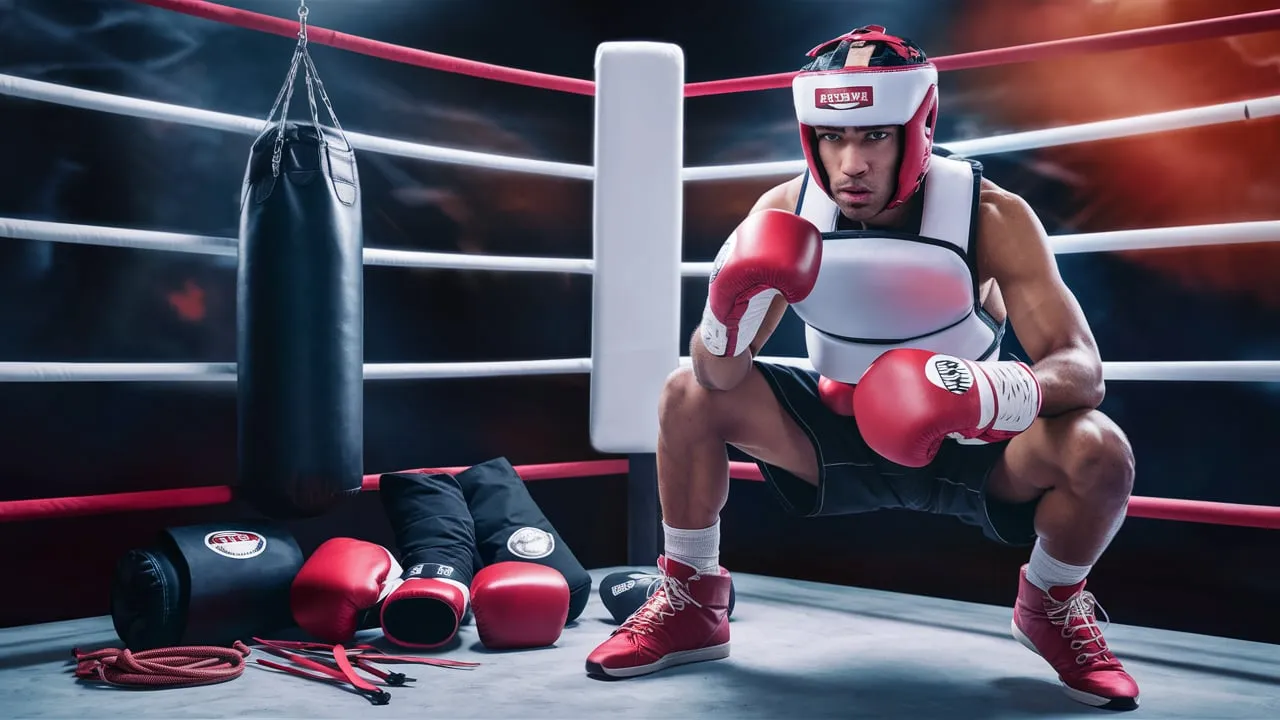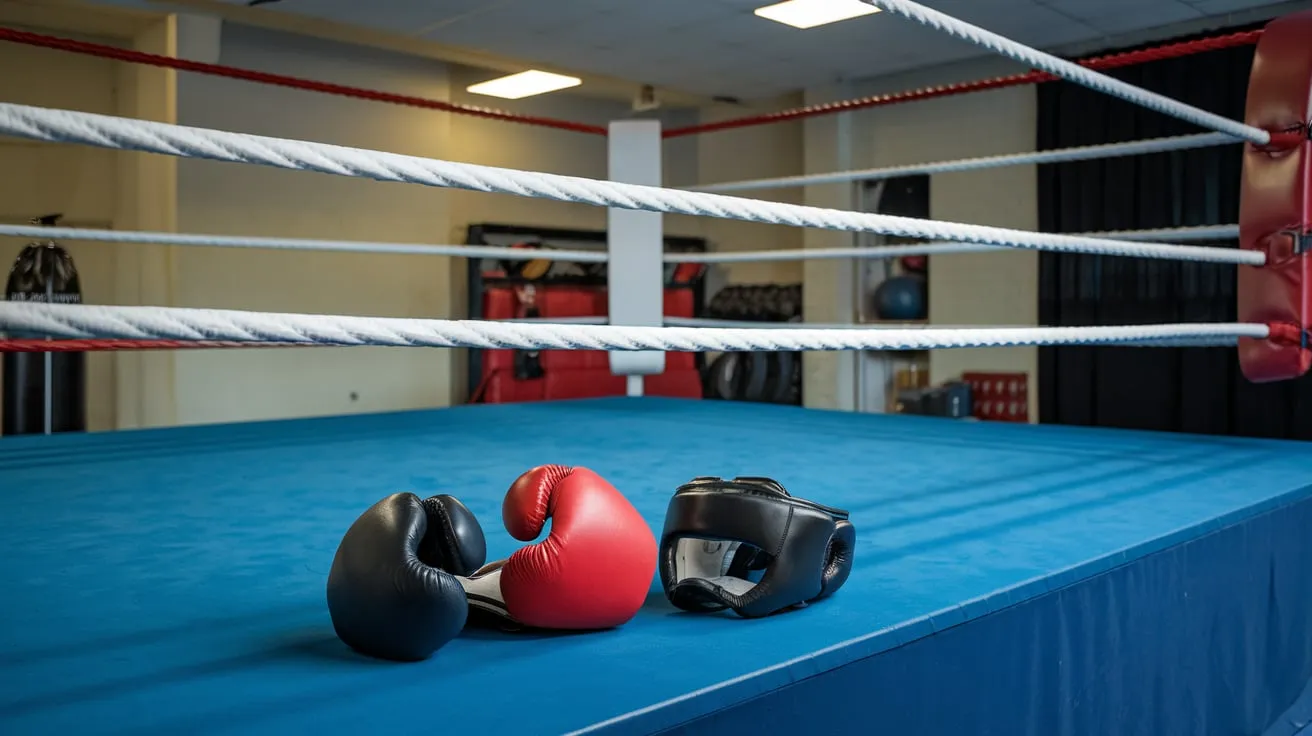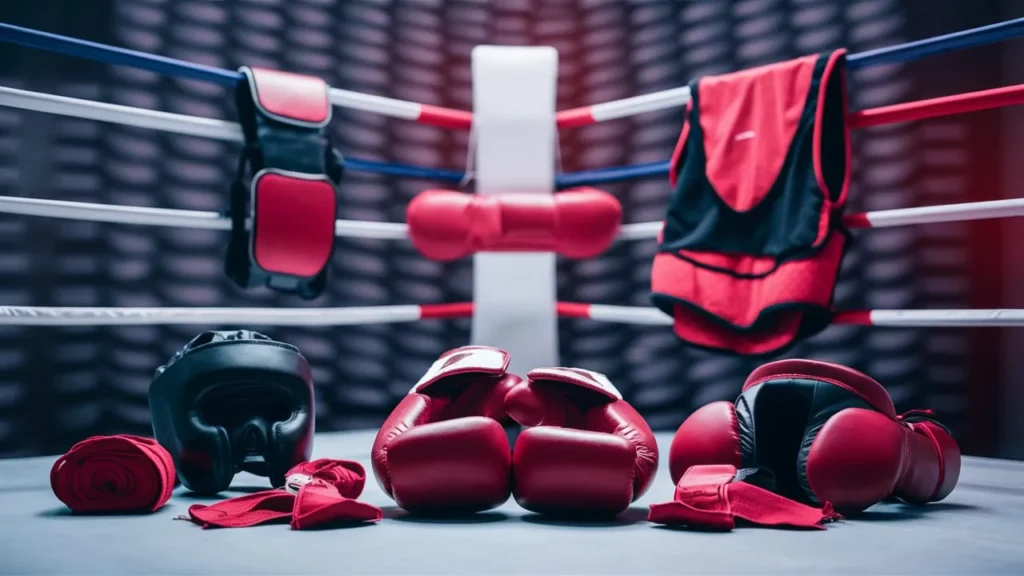Introduction: Why the Right Boxing Gear Matters for Beginners
Boxing, a sport rooted in both physical skill and mental toughness, requires much more than just strength and technique. Whether you’re stepping into the ring for the first time or preparing for your first sparring session, having the right boxing gear is essential. The appropriate equipment not only enhances your performance but also ensures your safety, especially when you’re just starting out.
As a beginner, choosing the right gear can seem overwhelming due to the vast array of options available, but understanding the essential components and how each piece contributes to your safety and success in the ring is crucial. In fact, 88% of beginners who invest in quality boxing gear report feeling more confident in their training and are less likely to sustain preventable injuries. [Source: Boxing Gear Industry Report, 2023].
In this guide, we’ll walk you through the essential boxing gear for new fighters, explaining why each item is important and how to select the best options for your needs. By the end of this article, you’ll have a comprehensive understanding of what gear is necessary and how to choose the right equipment for your training.

Boxing Gloves: The Foundation of Your Training Gear
Boxing gloves are arguably the most important piece of equipment for a boxer. They serve not only to protect your hands but also to reduce the impact on your opponent when you strike. Whether you’re shadowboxing, hitting the bag, or sparring, choosing the right gloves can significantly impact your performance.
Types of Boxing Gloves for Beginners
When shopping for gloves, you’ll come across several different types. The key to selecting the right gloves is understanding the weight and design suited for your training goals:
- Training Gloves: Typically between 12-16 oz, these are versatile gloves for bag work, mitt training, and sparring.
- Bag Gloves: Lighter than training gloves (around 8-10 oz), these are designed specifically for heavy bag workouts.
- Sparring Gloves: Heavier (16 oz and above) to provide more protection for both you and your sparring partner.
Key Factors to Consider:
- Fit: Gloves should fit snugly around your hands without being too tight, allowing for optimal punch control.
- Padding: Look for gloves with adequate padding over the knuckles, palms, and wrists to avoid injuries.
- Closure: Velcro is popular for beginners because it’s easy to use, while lace-up gloves provide a more secure fit but are harder to adjust without help.
Cost Consideration:
A decent pair of boxing gloves typically ranges from $50 to $200, depending on the brand and materials. As a beginner, expect to spend around $80 to $150 for a good-quality pair.
Hand Wraps: Protecting Your Wrists and Knuckles
Before slipping your hands into gloves, it’s crucial to wrap your hands with hand wraps. These offer additional protection by stabilizing your wrists, knuckles, and the smaller bones of your hands, which are particularly vulnerable during the repetitive impact of punching.
How to Choose Hand Wraps:
- Length: Hand wraps come in different lengths, usually between 120” to 180”. Longer wraps provide more support but may be difficult to manage for beginners.
- Material: Traditional wraps are made from cotton, but newer synthetic materials like elastic hand wraps offer more stretch and support.
Why Hand Wraps Matter:
Hand wraps absorb sweat, prevent skin irritation, and safeguard your hands from injuries like sprains and fractures. They’re often considered a must-have by coaches and experienced fighters alike.
Cost of Hand Wraps:
Expect to pay between $5 and $20 for a quality pair. The length and material quality typically influence the price.
Boxing Shoes: The Key to Stability and Agility
While it’s easy to overlook the importance of boxing shoes, they’re crucial for maintaining proper footwork, agility, and balance in the ring. Boxing shoes are designed with a lightweight, flat sole that gives you the stability you need while also providing the flexibility for quick movement.
What to Look for in Boxing Shoes:
- Ankle Support: A high-top design provides ankle protection, especially useful for beginners still learning balance and movement.
- Grip: The soles should have a non-slip surface to avoid accidents during footwork drills or sparring.
- Breathability: Shoes with mesh panels help wick away sweat and keep your feet cool during intense workouts.
Price Range:
A good pair of boxing shoes costs between $50 and $150, with higher-end brands offering enhanced durability and support. For beginners, expect to spend around $70 to $100 for a well-balanced option.
Headgear: Protecting Your Head and Face

Headgear is an essential piece of safety equipment for any boxer, especially when sparring or engaging in controlled contact. While headgear doesn’t guarantee complete protection against concussions, it can significantly reduce the risk of facial injuries, cuts, and bruises.
Key Features of Headgear:
- Padding: A good headgear design includes foam or gel padding around the forehead, cheeks, and chin.
- Visibility: Choose headgear with proper cutouts around the eyes for clear vision during sparring.
- Adjustability: Ensure the headgear has a secure fit that can be adjusted to your head size.
Cost Consideration:
Headgear prices typically range from $40 to $150. While some beginner headgear may be affordable, it’s essential to prioritize quality to ensure maximum protection.
Mouthguard: Safeguarding Your Teeth and Jaw
A mouthguard is non-negotiable when it comes to boxing. It’s a small investment that can save you from serious dental damage, which can be quite costly to repair.
Types of Mouthguards:
- Boil-and-Bite: These are affordable and easy to mold at home. They offer a custom fit by softening in hot water before being shaped to your teeth.
- Custom-Made: These mouthguards are more expensive but provide the best fit, comfort, and protection, especially for sparring.
Importance of Mouthguards:
- Protects your teeth and jaw from fractures and lacerations.
- Prevents your teeth from clashing together, which can result in TMJ issues or concussions.
Price Range:
Expect to pay between $10 to $50 for a boil-and-bite mouthguard, while custom-made options can range from $100 to $300.
Protective Cup: Safety for the Groin Area

Though often overlooked, a protective cup is an important part of your boxing gear, especially for men. It shields your groin area from accidental strikes, which can cause severe pain and long-term injury.
Why It’s Important:
In boxing, even an accidental punch to the groin can result in serious injury. A good-quality protective cup can prevent these types of injuries.
Cost of Protective Cups:
A high-quality cup typically costs between $15 and $40. Look for models with ergonomic designs for comfort and mobility.
Boxing Bag (for Home Training)
While it’s not a requirement for all beginners, investing in a boxing bag can significantly improve your training at home. Heavy bags and speed bags are great for working on your punches, footwork, and conditioning.
Types of Bags:
- Heavy Bag: Ideal for developing power and endurance.
- Speed Bag: Helps improve hand-eye coordination and speed.
- Double-End Bag: Great for timing and reflex development.
Price Range:
- Heavy Bags: Typically cost between $100 and $300.
- Speed Bags: Priced between $50 and $150.
People Also Ask
How tight should my boxing gloves be?
Boxing gloves should fit snugly, but not too tight. You should be able to make a fist comfortably without feeling constricted. If the gloves are too loose, they won’t provide enough support; if they are too tight, they could cause discomfort or restrict circulation. When trying on gloves, always ensure you have your hand wraps underneath to get the most accurate fit.
Are boxing shoes necessary for beginners?
While not absolutely necessary for beginners, boxing shoes are highly recommended. They provide better support for lateral movement, quick pivots, and maintain balance during footwork drills. Regular sneakers don’t offer the same traction or ankle support, which may hinder your performance and increase the risk of injury. Investing in boxing shoes will make your training more effective in the long run.
Can I train boxing at home without a punching bag?
Yes, you can still train at home without a punching bag. Focus on techniques like shadowboxing, footwork drills, and conditioning exercises such as jumping rope or calisthenics. You can also use a speed bag or double-end bag if you want to add some variety to your training. While a heavy bag is ideal for practicing punches, beginners can still make progress without one by focusing on form, technique, and fitness.
How often should I replace my boxing gloves?
The lifespan of boxing gloves depends on how often you train and how well you take care of them. On average, boxing gloves should be replaced every 6 months to 1 year if used regularly for training and sparring. If you notice that the padding is compressed, the stitching is coming undone, or the gloves start to feel less supportive, it’s time to replace them.
Conclusion: The Right Gear Sets the Stage for Success
The conclusion underscores that investing in quality boxing gear is not just about having the right tools but about ensuring safety and performance enhancement. It helps beginners avoid common injuries and allows them to train effectively. Emphasizing this point, the article makes the case that, without proper protection and equipment, beginners are more susceptible to injuries that could derail their training or even prevent them from continuing in the sport.
The closing line emphasizes the long-term benefits of investing in good gear. It suggests that, with the right equipment, beginners will not only protect themselves but also have the tools needed to develop their skills. In boxing, having the right gear is an investment that contributes to success, progress, and sustained training.




